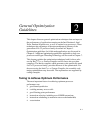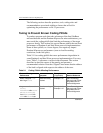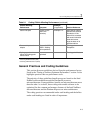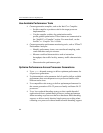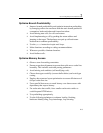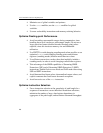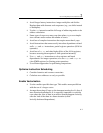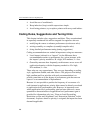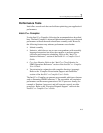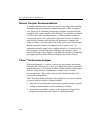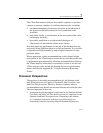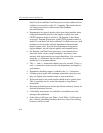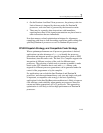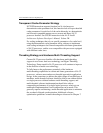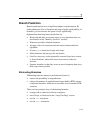
IA-32 Intel® Architecture Optimization
2-8
• Avoid the use of conditionals.
• Keep induction (loop) variable expressions simple.
• Avoid using pointers, try to replace pointers with arrays and indices.
Coding Rules, Suggestions and Tuning Hints
This chapter includes rules, suggestions and hints. They are maintained
in separately-numbered lists and are targeted for engineers who are:
• modifying the source to enhance performance (user/source rules)
• writing assembly or compilers (assembly/compiler rules)
• doing detailed performance tuning (tuning suggestions)
Coding recommendations are ranked in importance using two measures:
• Local impact (referred to as “impact”) is the difference that a
recommendation makes to performance for a given instance, with
the impact’s priority marked as: H = high, M = medium, L = low.
• Generality measures how frequently such instances occur across all
application domains, with the frequency marked as: H = high,
M = medium, L = low.
These rules are very approximate. They can vary depending on coding
style, application domain, and other factors. The purpose of including
high, medium and low priorities with each recommendation is to
provide some hints as to the degree of performance gain that one can
expect if a recommendation is implemented.
Because it is not possible to predict the frequency of occurrence of a
code instance in applications, priority hints cannot be directly correlated
to application-level performance gain. However, in important cases
where application-level performance gain has been observed, a more
quantitative characterization of application-level performance gain is
provided for information only (see: “Store-to-Load-Forwarding
Restriction on Size and Alignment” and “Instruction Selection” in this
document). In places where no priority is assigned, the impact has been
deemed inapplicable.




